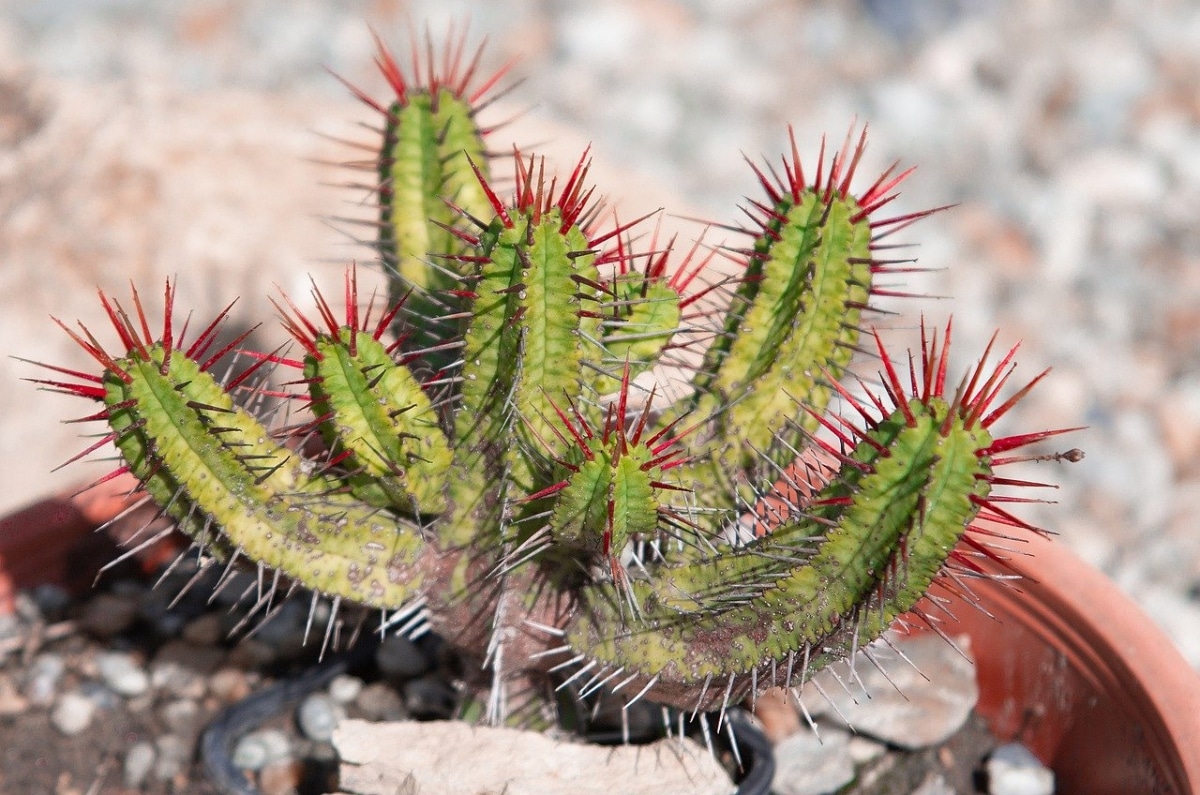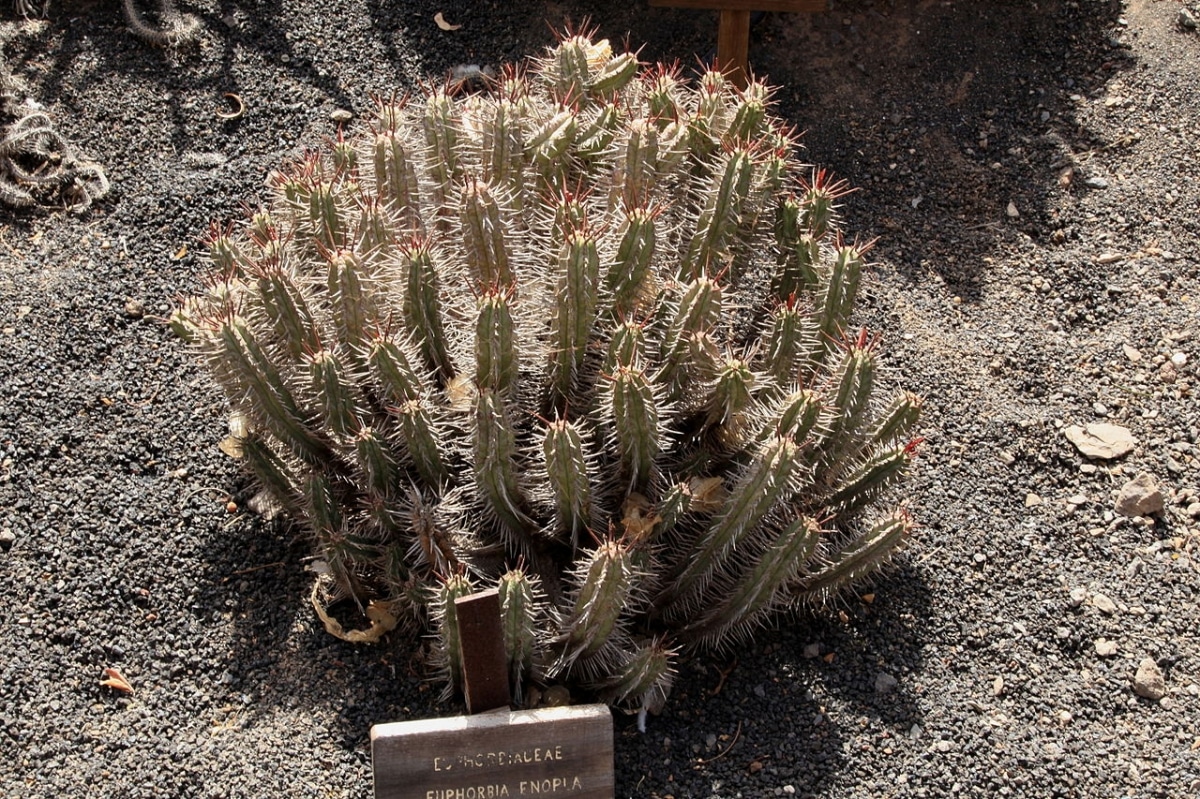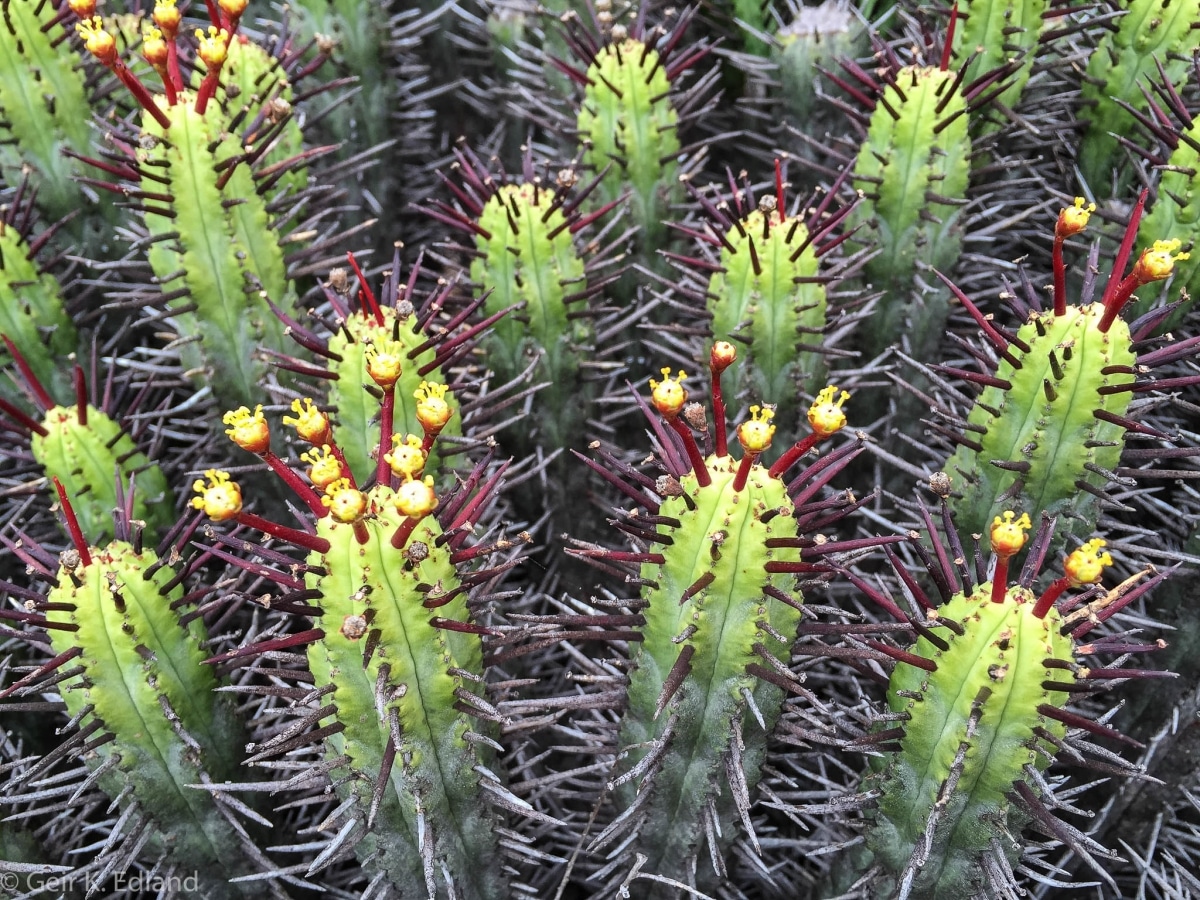
La euphorbia enopla it is one of the best known prickly succulents. It is a magnificent low shrub with multiple branches that grow closely together, and are very well protected by thorns. which are greyish-white except those of the upper part which are red. It produces flowers, like all angiosperm plants, but they are so small that they sometimes go unnoticed. For this reason, it is cultivated more because of how rare it is and how easy it is to maintain.
It looks like a real cactus, but the fact that it does not have areolas makes it different from them. Now, their needs are similar; in fact, when you go to buy a specimen you have to go to the table where they have them, or get it in a specialized nursery. So do not hesitate to know everything about the euphorbia enopla.
How is it?
La euphorbia enopla is a shrubby plant endemic to South Africa that grows in the shape of a candelabra. The branches are thin, 1-2 centimeters thick, and well armed with thorns which are 1-1.5 centimeters long. It may have leaves, but they are very small and they are not always present: it is the stem, being green, that is responsible for photosynthesis; in this way it can better withstand drought.
Reaches an approximate height of 90 centimeters. As we said, it is a plant that produces flowers, and it does so in spring. These are grouped in inflorescences, and can be female or male. The former are larger than the latter, and are red in color.
There is a very curious variety, the Euphorbia enopla f. crystal, what is this:

Image - Flickr / Cerlin Ng
As you can see, it has a rounded shape, but it still has its spines. It reaches a lower height, about 20-30 centimeters, and is sometimes sold grafted.
How to take care of it?
Caring for the euphorbia enopla they are simple. It is a very resistant plant, which you can grow in a pot for a long, long time. In fact, it is usually kept in a container always, throughout its life.
Therefore, even if you don't have a garden, if you want a thorny plant suitable for beginners, don't hesitate to get a specimen of this species. Surely with the advice that we are going to give you below you will have it beautiful:
Location
It is a plant that you must place in a place where there is abundant light. If it is going to be outside, the most advisable thing is to have it in a sunny exhibition so that it can grow well.
In the event that it is going to be inside the house, we will put it in a well-lit room. Ideally, there would be windows through which the sunlight would enter, but it would also be worth having the roof be glazed, or even putting it near the window whenever we rotate the pot a little every day.
Earth
- Flower pot: it is not a cactus, but having similar needs it can be planted in a pot with substrate for these types of plants (on sale here). An alternative would be the universal substrate mixed with perlite in equal parts.
- Garden: It is important that the garden soil drains water quickly, and that it is light. The roots of this plant do not tolerate excess water.
Irrigation

Image - Wikimedia / Frank Vincentz
Watering will be occasional. Do it only when the ground is dry, as it resists drought very well but not waterlogging. For this reason, when you water you have to pour water until you see that the substrate has been well moistened, but it will not be watered again for a few days.
You have to give the roots time to hydrate, but also to dry out a bit. Thus, the euphorbia enopla it will grow very well.
Subscriber
It is advisable to pay it from early spring to late summer. For this, liquid fertilizers for cacti and succulents can be used (on sale here), but it is important that the instructions on the packaging are followed. And it is that if you add more quantity than indicated, the roots would burn and the plant could never recover.
Transplant
La euphorbia enopla may need a larger pot every 2-3 years. You will know this if you see that the roots come out through the drainage holes of the same. When changing it, it is important not to manipulate the roots too much, and put it in a container that is about 4-5 centimeters wider and taller than the one that has been used.
In addition, you have to wait for spring to arrive, and for the temperatures to finish recovering. Only when the minimum is at least 18ºC can you transplant it. In the event that you want to keep it on the ground, you will also have to wait for the temperatures to recover.
Multiplication
It is multiplied by cuttings in spring.
Rusticity
Withstands very mild and short-term frosts of up to -2ºC provided it is grown in a sheltered area. What's more, it is best for her to have it indoors or in a greenhouse during the winter if it drops below 0 degrees.

Image - Flickr / Geir K. Edland
Did you know the euphorbia enopla? It is undoubtedly a most curious plant that deserves a place in our collection, don't you think?